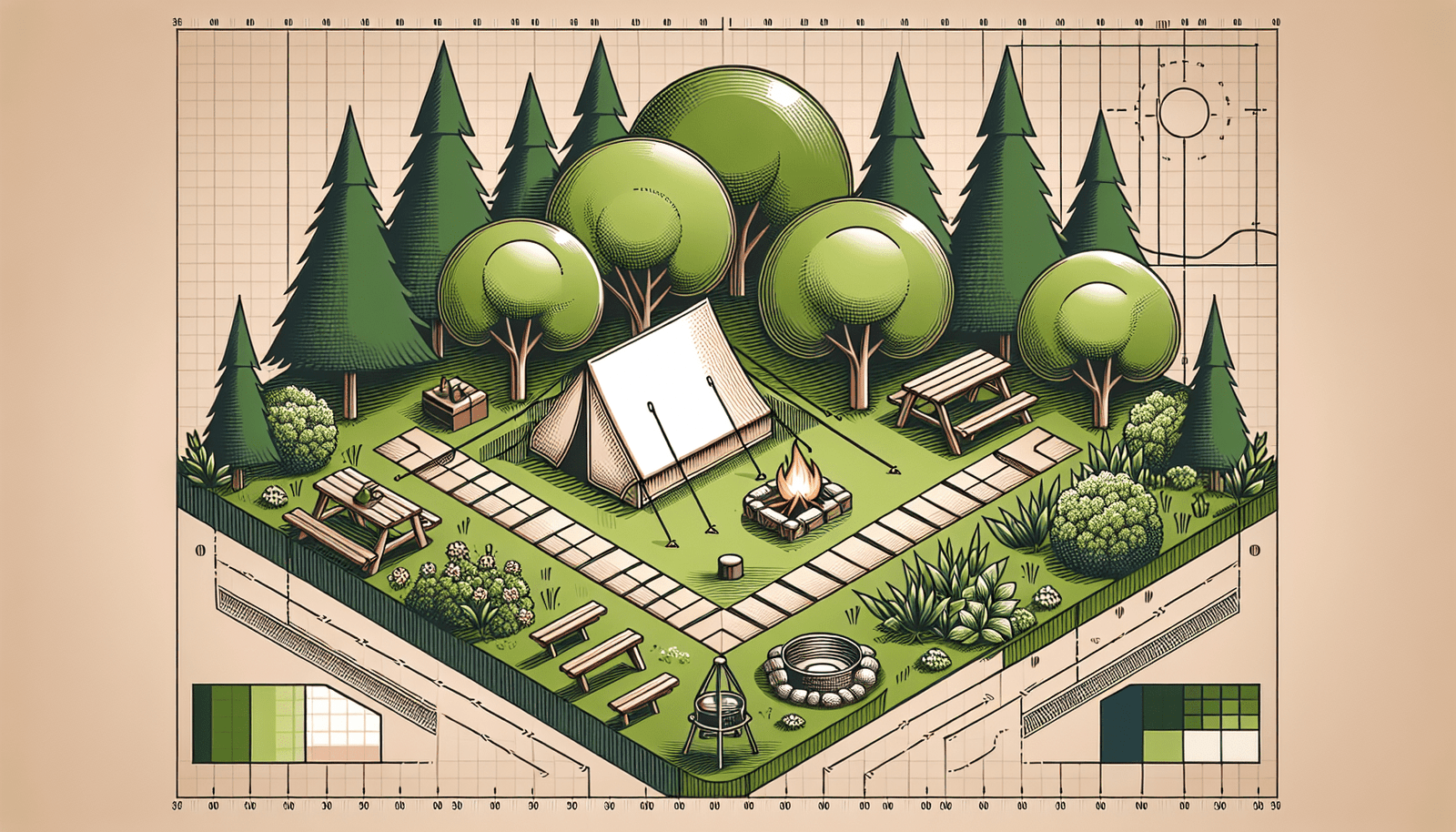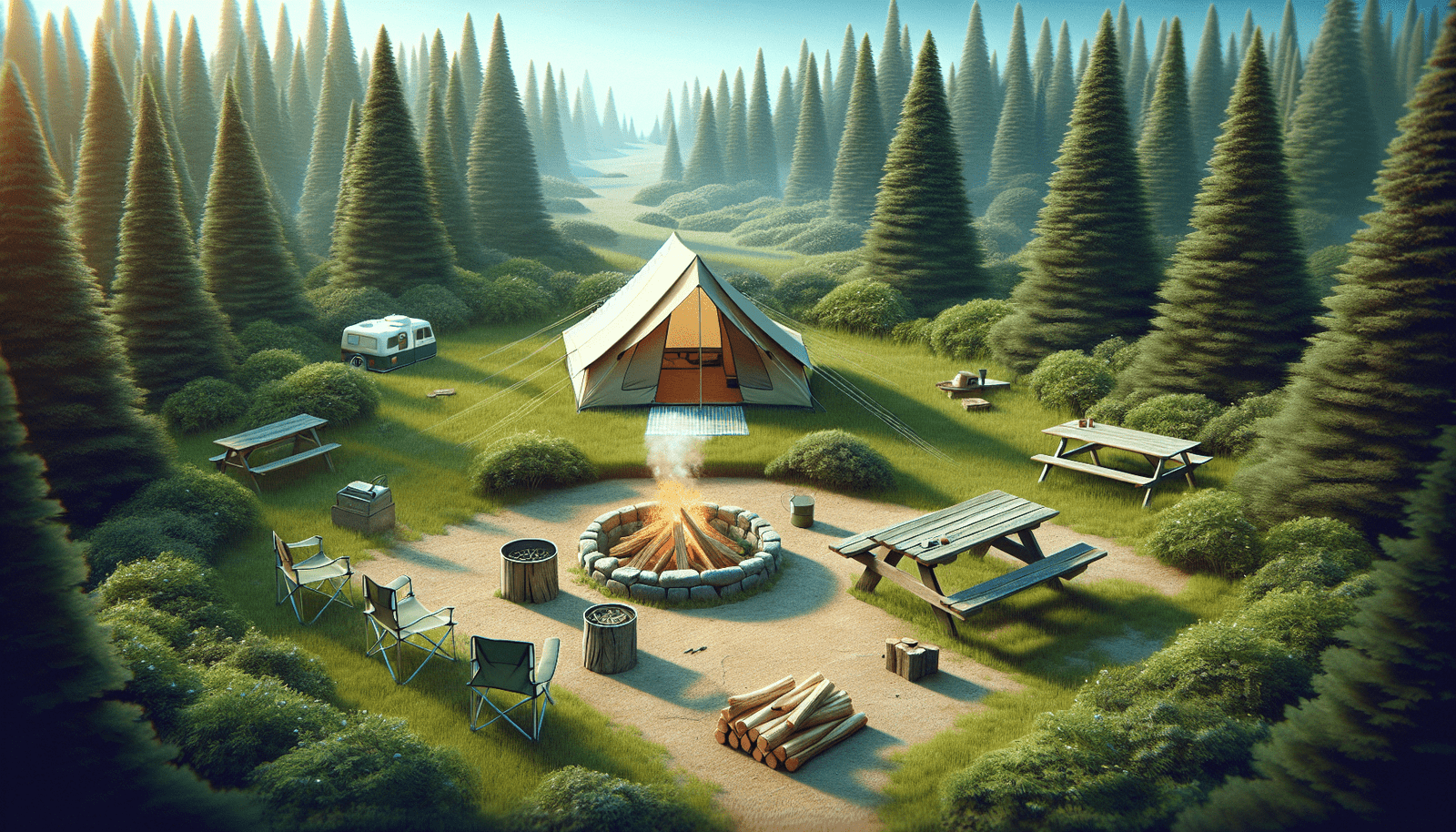When planning your next camping trip, understanding the size of a standard campsite can make all the difference in ensuring your adventure goes smoothly. Standard campsites typically range in size from 20 to 30 feet in width and 30 to 50 feet in depth, offering enough room for your tent, vehicle, and a bit of outdoor living space. With this knowledge at your fingertips, you can choose the perfect spot to pitch your tent, set up your gear, and enjoy your natural surroundings without feeling cramped or overcrowded.
What Is A Standard Campsite Size?

Introduction
Have you ever found yourself wondering, “What is a standard campsite size?” Whether you’re new to camping or a seasoned adventurer, understanding the dimensions and features of a standard campsite can greatly enhance your outdoor experience. The size of a campsite affects everything from the types of tents you can bring to the activities you can comfortably enjoy. Let’s dive deep into what makes a campsite standard and explore the various factors that can affect this.
Understanding Campsite Sizes
What Constitutes a Standard Campsite?
When we talk about a “standard” campsite, we’re referring to a typical plot of land reserved for camping in public or private campgrounds. While there is no universal size, certain measurements are generally accepted as the norm.
Typical Dimensions
Most standard campsites are approximately 20 feet by 30 feet. This size is usually sufficient to accommodate a tent, a fire pit, a picnic table, and space for parking a vehicle.
| Features | Dimensions |
|---|---|
| Campsite Area | 20 feet x 30 feet |
| Tent Space | 10 feet x 10 feet |
| Picnic Table Space | 6 feet x 6 feet |
| Vehicle Space | 10 feet x 20 feet |
Variations in Campsite Sizes
While 20 feet by 30 feet is fairly standard, keep in mind that campsite sizes can vary depending on the location and type of campground. Some sites are purposefully designed for larger groups or specific types of camping equipment, such as RVs or trailers.
Factors Influencing Campsite Size
Location
Campgrounds in densely wooded areas or near bodies of water tend to have smaller individual sites due to natural constraints. On the other hand, open plains or areas with fewer natural obstacles can afford larger campsites.
Type of Camping
- Tent Camping: These campsites generally range from small (10 feet by 10 feet) to standard-sized (20 feet by 30 feet).
- RV Camping: RV sites are often larger, ranging from 20 feet by 50 feet to accommodate the length of the RV and any additional equipment.
- Group Camping: Designed to host multiple tents and more people, these sites can be as large as 50 feet by 100 feet or even larger.
Regulations and Guidelines
Public campgrounds, such as those in national parks, often adhere to standard dimensions outlined by governing bodies. These regulations ensure that campsites are both safe and comfortable for all campers.
Choosing the Right Campsite Size
Assess Your Needs
Before reserving a campsite, think about what you’ll need for your stay. Are you camping alone, or will you have a large group? Will you be using a small tent, a large tent, or an RV? These factors will influence the space you require.
Consider Your Activities
If you plan on spending most of your time hiking or exploring, a smaller campsite might suffice. However, if you envision spending lots of time at your site for cooking, games, or relaxation, you’ll likely need more space.
Research Campground Options
Different campgrounds offer a variety of site sizes. Make sure to research in advance to find a site that best suits your needs. Many campground websites provide detailed information, including the size and layout of each available site.

The Importance of Knowing Standard Campsite Sizes
Ease of Setup
Knowing the dimensions of your campsite helps tremendously when setting up. You’ll know how to arrange your tent, how to park your vehicle, and where to place other campsite essentials like your picnic table and fire pit.
Safety Considerations
Adequate space between your tent and the fire pit, as well as between different camping units, ensures a safer camping experience. It can also reduce the risk of wildlife encounters and accidents.
Comfort and Enjoyment
A well-sized campsite allows for a more comfortable and enjoyable experience. You won’t feel cramped, and you’ll have enough space to stretch out and relax, which is what camping is all about!
Comparing Campsite Sizes for Different Types of Camping
Tent Sites
For tent camping, a standard size of 20 feet by 30 feet usually suffices, providing enough space for a 10 feet by 10 feet tent, a fire pit, a picnic table, and a parking spot. If you have a larger tent or multiple tents, you may wish to look for larger sites.
| Feature | Standard Size | Larger Tent Size |
|---|---|---|
| Tent Area | 10 feet x 10 feet | 20 feet x 20 feet |
| Picnic Table Space | 6 feet x 6 feet | 8 feet x 8 feet |
| Fire Pit Area | 5 feet x 5 feet | 8 feet x 8 feet |
| Parking Spot | 10 feet x 20 feet | 10 feet x 30 feet |
RV Sites
RV sites need to accommodate the length and width of the vehicle as well as slide-outs, which are extensions that increase internal living space. A typical RV site is about 20 feet by 50 feet.
| Feature | Standard Size | Larger RV Size |
|---|---|---|
| RV Parking Spot | 20 feet x 50 feet | 25 feet x 60 feet |
| Picnic Table Space | 6 feet x 6 feet | 8 feet x 8 feet |
| Fire Pit Area | 5 feet x 5 feet | 8 feet x 8 feet |
Group Sites
For larger groups, you might need a campsite that’s as large as 50 feet by 100 feet to comfortably fit multiple tents, vehicles, and activity areas.
| Feature | Standard Group Size |
|---|---|
| Multiple Tent Area | 30 feet x 40 feet |
| Multiple Picnic Tables | 6 feet x 6 feet each |
| Communal Fire Pit Area | 10 feet x 10 feet |
| Multiple Parking Spots | 10 feet x 20 feet each |
Best Practices for Reserving Your Campsite
Online Reservations
Most modern campgrounds offer online reservations, which allow you to select a site based on detailed descriptions and sometimes even pictures. Make sure to read the dimensions carefully before booking.
Calling the Campground
If you’re unsure about the site dimensions or what might fit, calling the campground directly can provide you with accurate information and recommendations based on your specific needs.
Arriving Early
Arriving early to your campsite can give you a better chance of selecting the site that perfectly matches your needs. If campsites are assigned on a first-come, first-served basis, early arrival is even more crucial.
